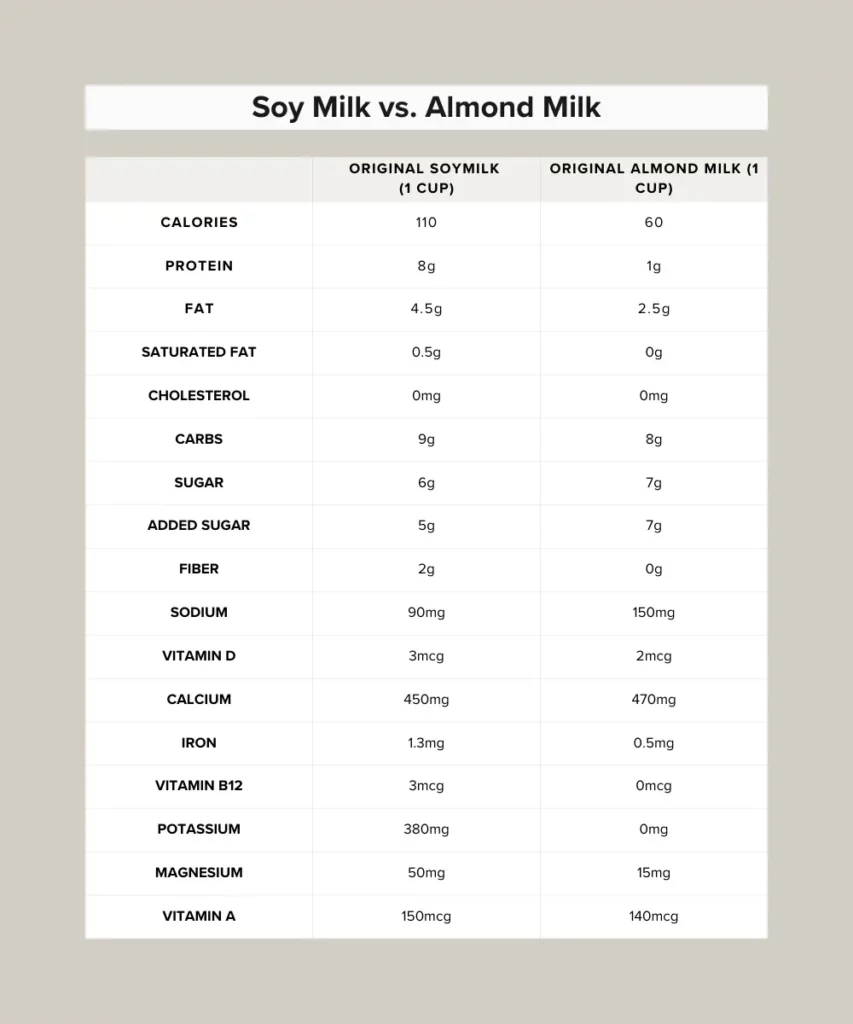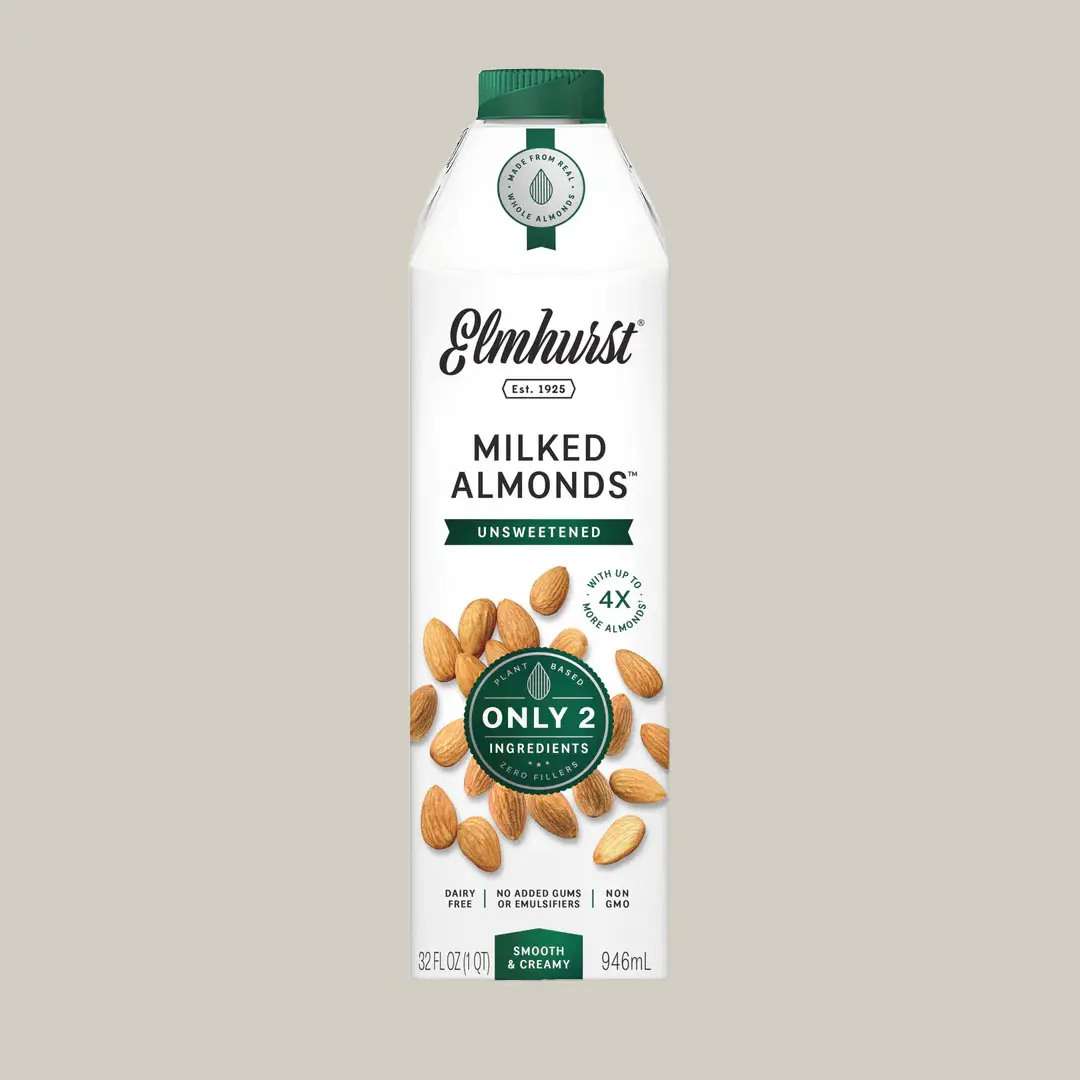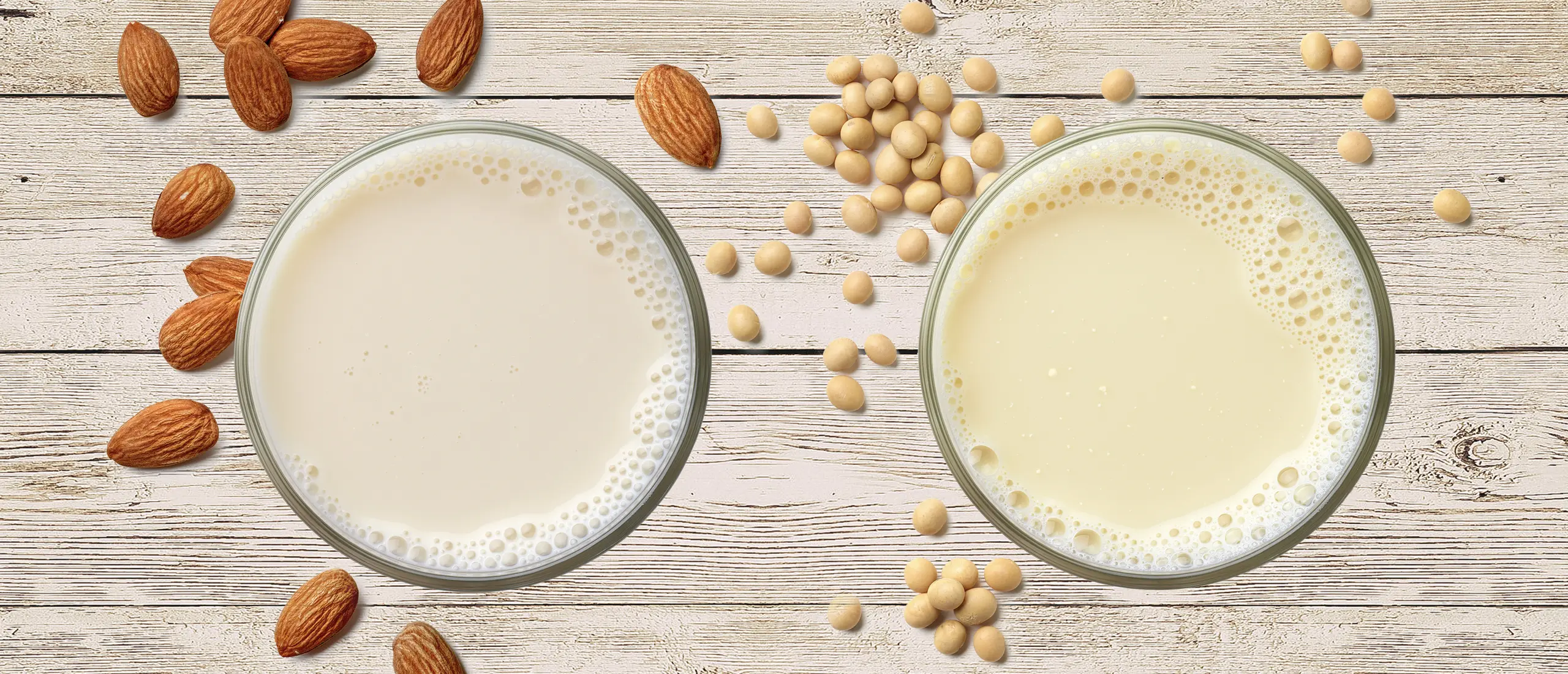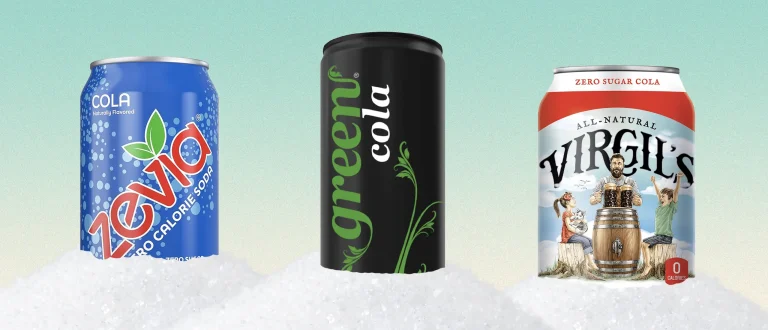Choosing the healthiest milk when you’re trying to dial in your diet might be more of a roller coaster than getting your family to agree on what to eat for dinner. Not only do you have to choose between skim, low-fat, and whole. You now also have your pick of dairy-free milk alternatives made with everything from hazelnuts to oats to bananas. But if you’re plant-based, the fiercest competition typically comes down to the two most widely available options: soy milk and almond milk.
Sure, almond milk is tasty. And it avoids soy—which has gotten a bad rap in recent years for negatively impacting men’s hormone levels (don’t worry, that rumor has been debunked). In fact, recent research suggests that soy might boost muscle growth, aid weight loss, alleviate hot flashes, and support bone health (1).
So which is more nutritious? We settle the soy milk vs. almond milk debate once and for all.
Ingredients
Soy milk and almond milk both start with a similar range of basic ingredients: Almonds or soybeans, and water. The nuts or legumes are soaked, blended with water, and then strained.
From there, ingredients vary by brand. Some keep things simple with minimal additives. Others add vitamins and minerals, sweeteners, oils, and emulsifiers. Here’s what to look for:
Added sugars, oils, and emulsifiers
High sugar intake has been linked to everything from cardiovascular disease to cancer (2), which is why the American Heart Association recommends limiting your intake (3). Oils simply add unnecessary calories. And some emulsifiers—like gums and carrageenan—have been linked to negative cardiovascular and gut health outcomes (4, 5).
Micronutrients
Added micronutrients like calcium, vitamin B12, A, and D aren’t a must; but they often cover common nutrient gaps in plant-based diets.
Options that feature more micronutrients and are free of fillers can be more expensive. It’s a matter of choosing the best milk for your nutrition preferences, health goals, and budget.
Ingredients Winner: Tie
Almond milk and soy milk share similar basic ingredients. You get the most nutritional bang for your buck when you choose a dairy-free milk that contains micronutrients like calcium and vitamins A and D while limiting or avoiding added sugars, oils, and emulsifiers.
MILK ALTERNATIVES
Nutrition
Soy milk and almond milk have completely different nutrition profiles. Most notably, soy milk has more calories and protein. Almond milk has fewer calories but also significantly less nutritional value. For the sake of this article, we chose to compare one of the most widely available brands: Silk. But these nutrition facts generally stack up across the board.

Calories
Cup for cup, soy milk contains nearly twice the calories as almond milk.
Protein
With as much protein as cow’s milk (8 grams each per cup), soy milk beats out almond milk, which only delivers a mere gram of the macro.
Many other non-dairy alternatives like cashew and oat milk are also protein-poor, making soy milk a non-dairy protein standout. Recent research also suggests soy protein can be just as effective at building muscle as other protein sources, including dairy (6).
Fat
Compared to soy, almond milk has about half the amount of fat. But the fat content in each is so small that the difference is negligible.
Sugar
Unsweetened soy and almond milks average 0 to 1 gram of total sugar and no added sugar.
Sweetened varieties have more added sugar. For instance, Silk’s Original Soy and Almond milks have similar amounts of added sugar (5 grams; 7 grams).
Micronutrients
The range of micronutrients in almond or soy milk generally varies by brand. In the case of Silk Original, both the almond and soy milks are good sources of calcium, vitamin A, and vitamin D. The soy variety is the clear winner for vitamin B12, iron, potassium, and magnesium.
Brand aside, researchers recently uncovered that pea milk and soy milk tend to have higher levels of magnesium, phosphorus, zinc, and selenium than almond, cashew, oat, coconut, or rice milk options (7).
Phytoestrogens
You won’t find phytoestrogens on the nutrition label. However, these plant compounds—found in soybeans—have been controversial thanks to old studies linking soy to low testosterone levels, erectile dysfunction, and breast cancer. We now know, thanks to newer, better-designed studies—that the majority of these fears were unwarranted. Soy phytoestrogens are safe and, truth be told, good for you.
A large 2023 review in the American Journal of Clinical Nutrition concluded that higher intakes of phytoestrogens were linked to a lower risk of heart disease-related mortality and total mortality (8). Another suggests that isoflavone intake—a type of phytoestrogen—does not negatively impact levels of testosterone, estrogen, sperm, or semen in men (9). Current research also largely suggests that soy may alleviate hot flashes, and improve cognitive function in post-menopausal women (1).
The amount of phytoestrogens present in soy milk is not widely known. It likely varies by brand and processing method. And, in case you’re wondering, you won’t find phytoestrogens in almond milk.
Nutrition Winner: Soy Milk
Despite providing more calories and fat, soy milk contains significantly more protein and some fiber. It also tends to have a more beneficial micronutrient profile. Still, almond milk can fit into a healthy diet and might be a better option if you’re watching your calories.
MORE PLANT-BASED
Healthiest Soy Milk Options
Don’t have time to scan nutrition labels at the grocery store? Here are our top soy milk picks that go big on protein and skip added sugar.

Silk Organic Unsweet
1 cup serving: 80 calories, 7g protein, 4.5g fat (0.5g sat), 4g carb (2g fiber, 0g added sugar), 80mg sodium
This high-protein soy drink is made with non-GMO organically grown soybeans and contains a range of essential micronutrients including calcium, vitamin D, and vitamin B12. It tastes slightly beany, so it might not be your go-to for spiking your morning coffee. But it’s a solid base for smoothies. And it’s available at many grocers for a reasonable price.

West Life Organic Unsweetened Vanilla
1 cup serving: 100 calories, 9g protein, 4.5g fat (0.5g sat), 5g carb (1g fiber, 0g added sugar), 25mg sodium
A flavored soy milk that contains no added sugars is tough to find, but we found one. This creamy, vanilla-spiked drink is ideal for lattes, baked goods, smoothies, and overnight oats. It contains just three ingredients: organic soybeans, water, and organic natural flavor. Plus, it has more protein (9 grams in a cup) than most options on the market. Just keep in mind there are no added micronutrients.
Healthiest Almond Milk Options
Although it isn’t quite as nutritious as soy milk, almond milk remains one of the most popular non-dairy milk options. Here are our top picks for nutrition, taste, and texture.

Elmhurst Milked Almonds Unsweetened
1 cup serving: 130 calories, 5g protein, 11g fat (1g sat), 3g carb (1g fiber, 0g added sugar), 5mg sodium
Most almond milk tastes watered down—not this one. It’s rich and nutty thanks to Elmhurst’s special processing method, which extracts more nutrition from the almonds as they’re “milked.” It shows in the nutrition facts, where you’ll find more beneficial fat (11g) and protein (5g) than your average almond milk. We love that this milk alternative avoids emulsifiers, but there aren’t any added micros.

Almond Breeze Unsweetened Original
1 cup serving: 30 calories, 1g protein, 2.5g fat (0g sat), 1g carb (1g fiber, 0g added sugar), 170mg sodium
Almond Breeze is a staple for many almond milk drinkers. It’s easy to find, and affordable, and its low-key nut flavor is ideal for coffee, smoothies, and cereal. It contains no added sweeteners and is beefed up with calcium, vitamin D, vitamin A, and vitamin E. The sour points are it’s relatively low in protein (as to be expected from almond milk) and slightly high in sodium.
The Bottom Line
While the nutrition can vary significantly among brands, soy milk is more nutritionally solid than almond milk, with protein levels on par with cow’s milk. It also offers more micronutrients. Still, almond milk remains a viable option for those who are counting calories or don’t stomach soy very well.
- The health effects of soy: A reference guide for health professionals.
- Dietary sugar consumption and health: an umbrella review.
- How Much Sugar Is Too Much?
- Food additive emulsifiers and risk of cardiovascular disease in the NutriNet-Santé cohort: prospective cohort study.
- Randomized Controlled-Feeding Study of Dietary Emulsifier Carboxymethylcellulose Reveals Detrimental Impacts on the Gut Microbiota and Metabolome.
- Effect of Soy Protein Supplementation on Muscle Adaptations, Metabolic and Antioxidant Status, Hormonal Response, and Exercise Performance of Active Individuals and Athletes: A Systematic Review of Randomised Controlled Trials.
- Completing the micronutrient picture for plant-based milk alternatives.
- Dietary phytoestrogens and total and cause-specific mortality: results from 2 prospective cohort studies.
- Neither soyfoods nor isoflavones warrant classification as endocrine disruptors: a technical review of the observational and clinical data.











